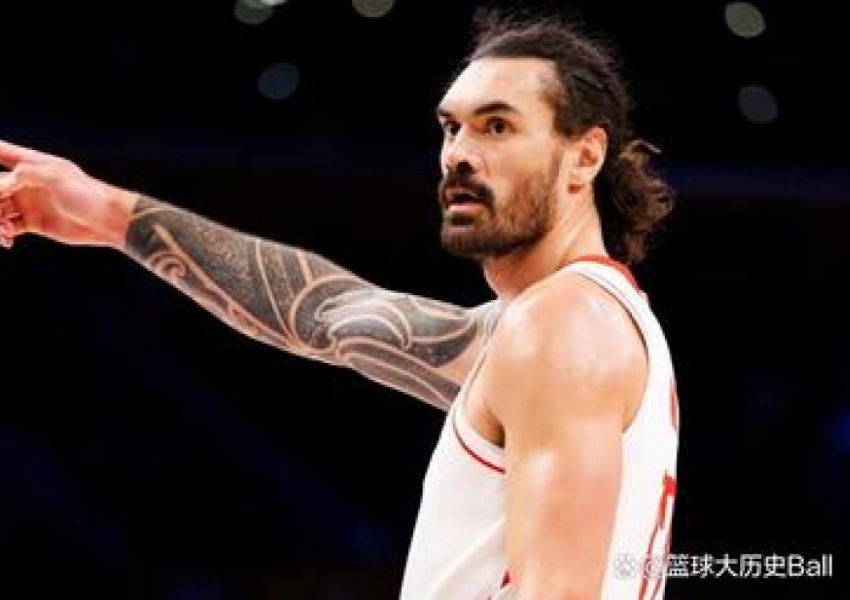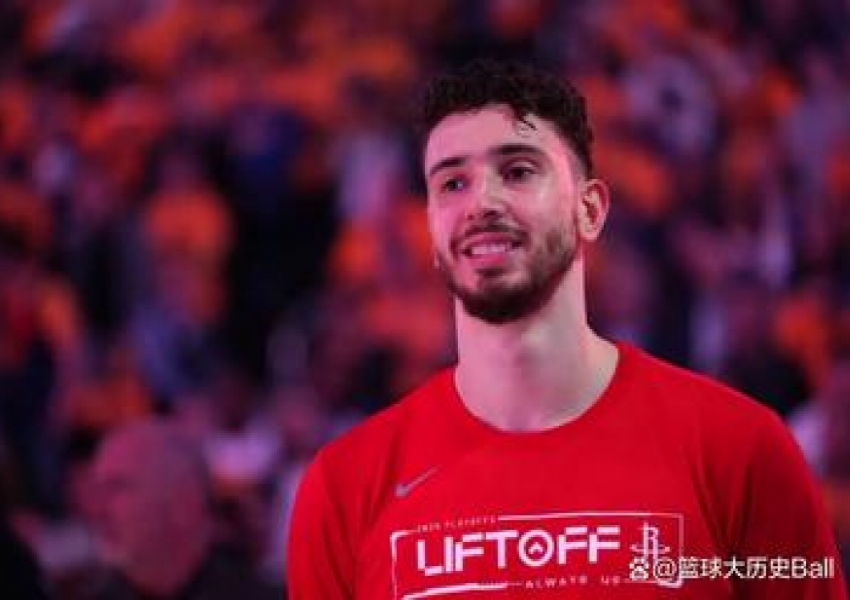The X-Factor Behind Houston's Game 6 Win: Why Steve Kerr Had No Answer for the Rockets’ Twin Towers
The Golden State Warriors had everything set up for a classic closeout. Back home in Chase Center, fueled by pride and a seasoned roster, many believed they’d put the feisty Houston Rockets to bed in Game 6. But instead of advancing, they ran into a brick wall—two of them, actually. Alperen Şengün and Steven Adams, Houston’s unlikeliest and most old-school duo, stood tall as the ultimate disruptors in a 115–107 victory that forced a Game 7.

In a series that has seen Fred VanVleet morph from ghost to flamethrower and the Warriors struggle to find consistent offense outside of Stephen Curry, it was the Rockets’ big men—one a finesse creator, the other a bruising enforcer—who ultimately swung the series back in Houston’s favor. Steve Kerr, a coaching savant of the small-ball revolution, had no counterpunch. The modern game may belong to the perimeter, but in Game 6, the paint belonged to the Rockets.

Şengün: The Engine of Everything
Let’s start with the Rockets’ offensive linchpin. Alperen Şengün once again proved why Houston's offense revolves around his craftiness, court vision, and post versatility. The numbers speak loudly—21 points, 14 rebounds, 6 assists, and 3 steals on 8-of-20 shooting. But it was the when and how of his impact that truly mattered.

In the second half alone, Şengün poured in 13 points, 8 rebounds, 4 assists, and 2 steals. He was the offensive fulcrum, orchestrating high-post actions, bodying up defenders in the low block, and delivering timely passes out of double-teams. Even with his shooting percentages hovering at an inefficient 46.3% for the series and a troubling 63.9% from the free throw line, Şengün has been irreplaceable.
Through six games, he’s averaging 20.8 points, 11.5 boards, and 5.3 assists. Not gaudy on the surface, but the flow of the Rockets’ offense is dependent on him. When coach Ime Udoka handed Şengün the final shot in Game 4’s waning seconds, it wasn’t just a vote of confidence—it was a declaration of identity. This is his team.
VanVleet: The Rollercoaster That Keeps Delivering
Fred VanVleet's Game 6 stat line was the definition of veteran composure meeting explosive scoring: 29 points, 8 rebounds, 8 assists, 7-of-13 from the field, 6-of-9 from deep, and a perfect 9-for-9 at the stripe. He played a game-high 40 minutes and absolutely roasted Golden State in the second half, where he tallied 19 points and constantly broke the Warriors’ perimeter coverages.
What makes VanVleet’s rise in this series even more remarkable is just how dismal he was in the first three games:
-
Game 1: 10 points (2-of-13 3PT)
-
Game 2: 7 points (1-of-7 3PT)
-
Game 3: 17 points (3-of-9 3PT)
He was practically invisible. But starting in Game 4, he caught fire:
-
Game 4: 25 points (8-of-12 3PT)
-
Game 5: 26 points (4-of-6 3PT)
-
Game 6: 29 points (6-of-9 3PT)
That’s 18-of-27 from deep in the last three games—an absurd 66.7%. He’s averaging 26.7 points over that stretch and giving off serious 2019 Eastern Conference Finals vibes, when he turned a series against the Bucks on its head after shooting poorly for weeks. The twist? That run also ended with VanVleet helping topple the Warriors.
When VanVleet catches fire, he’s a gravity warper—capable of Curry-esque barrages that break coverages and stretch defensive schemes past their limits. His shot selection may seem erratic at times, but when he’s feeling it, he can deliver as lethal a scoring punch as anyone on the floor.
The Real X-Factor: Steven Adams
Amidst the offensive fireworks of Şengün and VanVleet, Steven Adams quietly dominated the game in ways that don’t always show up in traditional box scores—but in this case, they did. In 31 minutes off the bench, Adams posted 17 points on a perfect 4-of-4 from the field, went 9-of-16 from the line, added 5 rebounds (3 offensive), and blocked 3 shots.
The kicker? He had a game-best +15 in plus-minus.
For a guy who averaged fewer than 14 minutes in the regular season and only 3.8 points per game, Adams’ sudden relevance has been a tactical revelation. In this series alone, his impact has been staggering:
-
129 minutes with Adams on the floor: Rockets score 119.8 points per 100 possessions, allow just 99.6 — a +20.2 net rating.
-
159 minutes without Adams: Rockets score just 103.7 per 100, while surrendering 120.0 — a -16.8 net rating.
That’s a swing of nearly 37 points per 100 possessions. To put it in perspective: that’s Jokic in an MVP season territory.
What makes Adams so impactful? His screening is elite, his physicality unmatched, and his rebounding—particularly on the offensive glass—disrupts Golden State’s transition game. But perhaps most important is how he enables the Rockets to play big in a series where the Warriors can’t really go small.
The Twin Towers That Kerr Couldn’t Knock Down
Houston’s twin-tower lineups featuring Şengün and Adams have played 75 minutes in this series. In those minutes, the Rockets have posted an offensive rating of 114.9 and a jaw-dropping net rating of +30.1.
Yes, +30.1.
And this isn’t something Udoka leaned on all season. In fact, across the 82-game grind, Şengün and Adams shared the floor for just 126 minutes total. That’s barely a blip. But here, in the crucible of playoff basketball, it’s become a central weapon—largely because Golden State has no physical answer.
The Warriors’ small-ball lineups simply don’t have the size to challenge Adams’ interior presence or box him out consistently. With Draymond Green, Jimmy Butler (playing as a pseudo wing-four), and fringe shooters like Buddy Hield, Gary Payton II, and Lester Quinones combining for just 2-of-12 from deep, Kerr’s rotations looked cramped and ineffective. Even Curry, shadowed all night in face-guard coverage, couldn’t save them.
Kerr tried to respond by hacking Adams early, sending him to the line to break Houston’s rhythm. The tactic made sense—Adams is a career 55% free throw shooter—but it didn’t work. He calmly went 9-of-16, converting just enough to neutralize the gambit.
Small-Ball Has a Playoff Ceiling
Kerr helped redefine NBA basketball by unleashing the Death Lineup and spreading the floor with quick guards and switchable wings. But this series—like Minnesota’s domination of the Lakers with size—proves an essential playoff truth: if you don’t have enough bulk, you will eventually be punished.
In the regular season, speed and spacing rule. In the playoffs, it’s about adaptability, resilience, and being able to survive physical mismatches. Houston’s size isn’t just cosmetic; it’s a pressure point. When VanVleet is hot and Şengün is facilitating, adding Adams into the mix gives them a level of control over tempo and second-chance scoring that completely neutralizes Golden State’s smaller rotations.
This isn’t to say Kerr can’t find answers. He’s one of the top 15 coaches in NBA history for a reason. He may throw zone looks, junk defenses, or give more minutes to Moses Moody or Jonathan Kuminga to create athletic mismatches in Game 7. He might even unleash Steph in a 2023 Game 7 vs. Sacramento-type onslaught.
But right now, the Warriors are getting outpunched, outrebounded, and outmuscled—and that’s a sentence no one thought would be written against a Houston team that many pegged as too young to matter in April.
Commentary:
They said size doesn’t matter in the modern NBA. They lied. Game 6 was a masterclass in bully ball—a throwback to a time when the paint was a battleground and not just a throughway to the arc. The Rockets didn’t just beat the Warriors—they exposed a fundamental flaw. With Adams and Şengün anchoring the interior and VanVleet catching fire from 30 feet, Houston has built a brand of playoff basketball that’s both unorthodox and brutally effective.
Steve Kerr may still have time to write a counter-narrative. But if he can’t solve the puzzle of the twin towers, Game 7 may end not with a splash—but with a crash.
Copyright Statement:
Author: focusnba
Source: FocusNBA
The copyright of this article belongs to the author. Reproduction is not allowed without permission.
Recommended Blog
- Minus-9 in a Statement Win: Can Jonathan Kuminga Still Be Saved?
- 0-for-7 in the Fourth: How Bad Is Jayson Tatum in the Clutch, Really?
- Outcoached, Outplayed: How the Thunder Let Game 1 Slip Through Their Fingers
- Standing Tall in Defeat: Just How Good Is 22-Year-Old Amen Thompson?
- Game 7 Heartbreak: Where Did the Rockets Fall Short, and Is Kevin Durant the Answer?
- Watch Out, West: The Nuggets Have Found Their Fifth and Sixth Men
- Game 7 Collapse: Where Did the Clippers Really Lose This Series?
- Historic First! Redick's Rotational Controversy, Where Did the Lakers Lose?
- 43 Million! How Bad Is Fred VanVleet's Playoff Struggle?
- Official Announcement! Did Gordon's Shot Violate the Deadline? Has Denver Shown Its Full Hand?